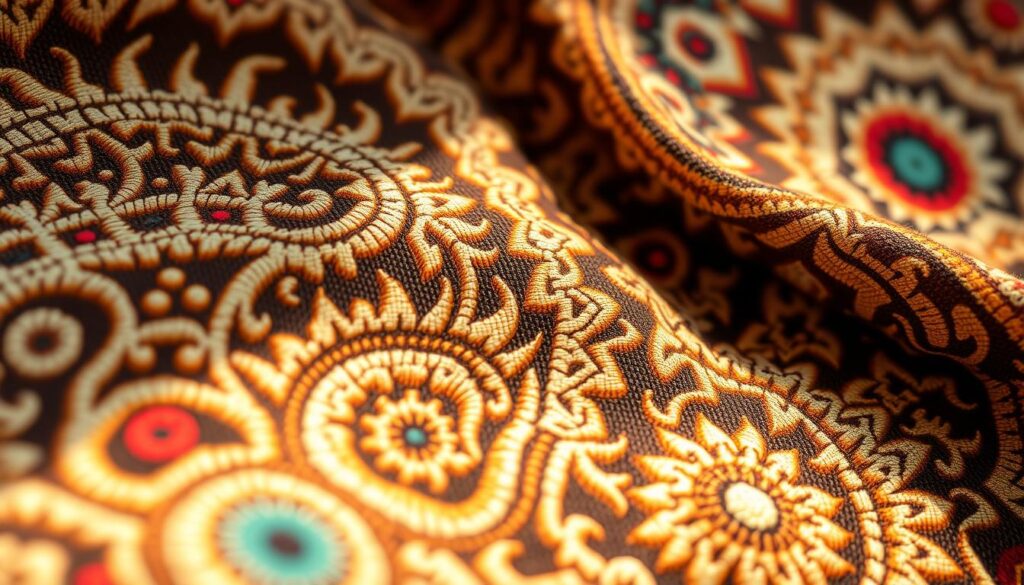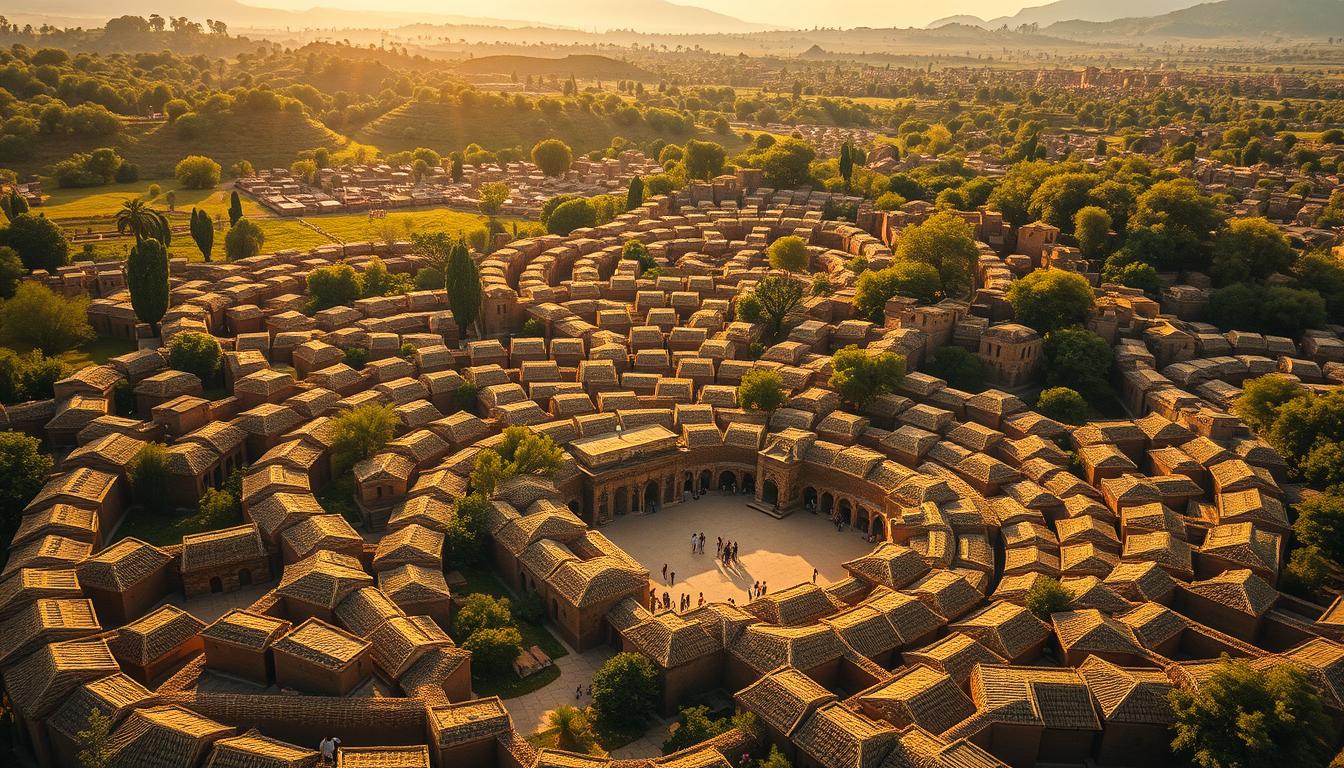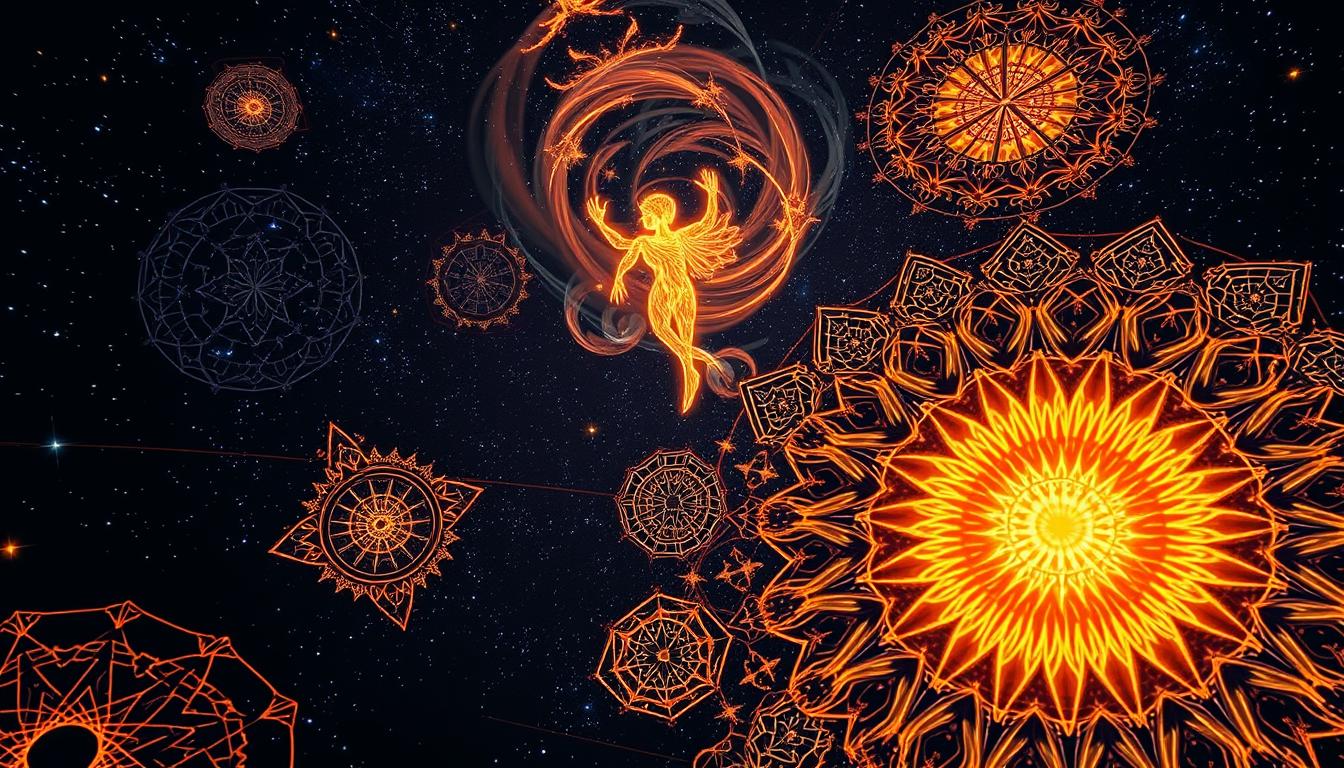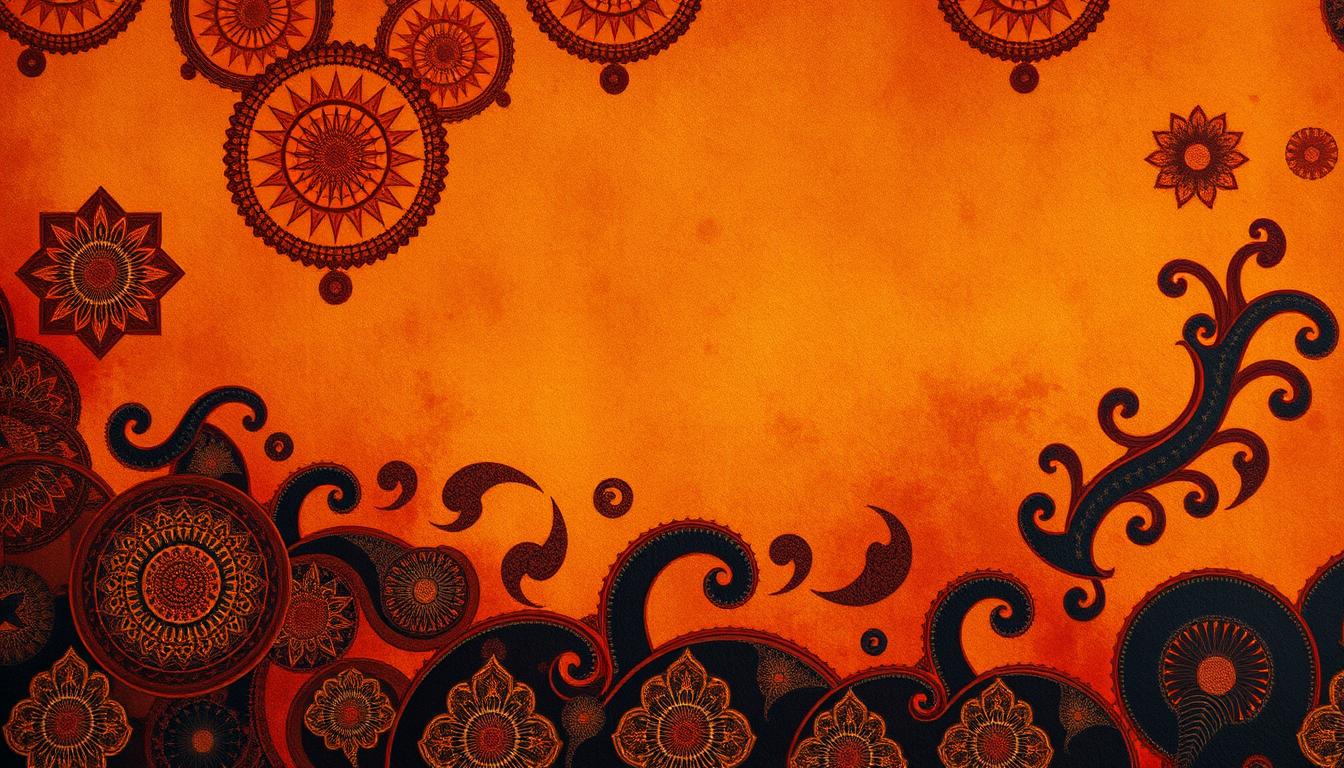Fractal motifs are detailed patterns found in indigenous textiles. They are key to traditional attire, showing aspects of culture and identity. This piece highlights how fractal motifs do more than decorate. They tell stories in fabric design.
By looking at how these patterns relate to nature and their makers, we understand their deep meaning. We see the importance in indigenous textiles.
Introduction to Fractal Motifs
Fractal motifs are patterns that repeat in design, mirroring self-similarity and recursion concepts. They are found in many parts of indigenous culture, serving multiple purposes. Besides looking beautiful, they carry deep meanings, telling cultural stories and reflecting communities’ values and beliefs.
This guide starts our journey into how fractal designs impact textile art. In textiles, fractal motifs are not just beautiful. They also carry rich symbolism. Using these patterns, native artists tell stories, share traditions, and connect with nature in their creations.

Understanding the Concept of Fractals
Fractals are an exciting mix of math and natural patterns. They have complex shapes that mirror themselves at different sizes. This self-similarity means if you look closer at a fractal, the same patterns show up again and again. They create a beautiful effect. We see these patterns in nature—like tree branches, seashell spirals, and cloud formations.
Fractals don’t just belong to math; they play a role in art and design too. Artists and designers take inspiration from nature’s self-repeating patterns. These patterns appear in textiles, buildings, and other creative projects. Ron Eglash’s work shows how fractals are part of African cultures. They pop up in traditional crafts and community designs. This shows how deeply fractals are woven into our cultures. They bring beauty and function to our lives.
The Role of Fractals in Nature
Fractals show fascinating natural patterns across our environment. They appear in trees, rivers, and more. These patterns help us understand our world better. Things like leaves, flowers, and our blood flow paths have fractal shapes. This shape makes things in nature work better and more efficiently.
These biological structures show the power of fractals. They help plants catch sunlight and bodies move blood and nutrients. By looking at these patterns, we learn their value. They inspire art, especially in indigenous textiles. This art forms a bridge between culture and the environment, celebrating their connection.
Fractal Motifs in Traditional Indigenous Clothing and Textiles
Fractal patterns are a key feature in indigenous clothing, serving both beauty and cultural roles. They show a close link to nature, history, and the art of storytelling. These unique designs in textiles are more than just decorations. They carry deep cultural meanings for the people who make them.
Examples of Fractal Patterns in Indigenous Textiles
Many cultures weave fractal patterns into their textiles. Native American weavings display nature in repeating complex designs. African textiles use vivid colors and complex patterns that mirror fractal shapes. Such examples include:
- Traditional Navajo blankets with geometric shapes mimicking natural elements.
- West African Kente cloth, revered for its vibrant fractal-inspired motifs.
- Andean textiles showcasing layered motifs that symbolize local landscapes.
The Cultural Significance of These Motifs
The importance of fractal motifs in indigenous clothing goes beyond looks. They carry stories and beliefs, connecting past to present. These patterns show the identity and values of the wearer’s community. Often, they are a way to share stories and wisdom through textile art. The detailed designs reflect the culture’s depth, showing indigenous peoples’ creativity and strength.
Historical Context of Fractal Patterns in Indigenous Cultures
Fractal patterns in indigenous cultures have deep meanings and uses. These motifs are not just decorations. They tell important cultural stories and show social structures. For centuries, these designs have been shared from parent to child. They reflect the values of the people who made them.
Fractal patterns appear in clothes and decorations in many indigenous cultures. They show a deep connection to the earth, ancestors, and the universe. These designs change over time but keep their original meaning. This shows how communities adapt to new challenges while staying true to their roots.
Studies show that fractals are often about how everything in life is connected. Their repeating designs can look like the patterns we see in nature. This helps us understand the world better. Looking closer at these patterns shows us the stories woven into each piece.
Connection Between Fractals and Cultural Identity
Fractals are deeply embedded in cultural identity, intertwining with traditions and beliefs. These patterns appear in ceremonial clothes, linking identity with community heritage. They represent stories handed down through generations, letting people honor their roots and individuality.
In indigenous cultures, fractals are more than art. They carry deep symbolic meanings, showing the bond between people and nature. The repeating patterns of fractals mirror community values, strengthening feelings of belonging. Through these designs, communities share their history, rituals, and social setups.
Fractals create a visual language for expressing identity, showing human experience’s complexity. Clothes with fractal patterns reveal personal stories, making each piece unique. This blend of fractals and identity highlights the connection between art, heritage, and self-expression.
Comparative Analysis: Fractals in African and Native American Textiles
Studying fractal motifs in textiles gives us cool insights into cultures. When we look at African textiles versus Native American designs, we see different but fascinating uses of motifs. Each uses fractals in a way that deeply connects with their community.
Fractal Representations in African Textiles
African fabrics are full of complex, geometric fractal patterns. These patterns are more than just pretty; they express social and spiritual values. Experts like Ron Eglash show how these designs mix art with math. The repeating patterns tie the art to the community’s beliefs, making everyone feel more connected.
Fractal Elements in Native American Designs
Native American designs, on the other hand, use circular and symmetrical fractals. These patterns are inspired by nature and its cycles. They often stand for harmony and balance, linking people closely to the natural world. Through weaving, pottery, and textiles, these designs tell stories and share cultural values in an artistic way.
The Mathematics Behind Fractal Motifs
Art and math often come together, unveiling the beauty in textile design. The use of fractals shows how creators bring ideas to life. These patterns are carefully crafted, following mathematical rules that shape their beauty.
Patterns and Algorithms in Textile Design
Craftspeople use complex algorithms to make stunning textile patterns. These patterns mimic nature and tell stories. By manipulating shapes, they create repeated designs that make fractals stand out. Craftsmen blend math with their skills, using intuition to guide them.
For contemporary textile designers, math opens up new possibilities. Key elements include:
- The use of recursive patterns to create depth and complexity.
- Transformational geometry to achieve harmonious symmetry.
- Algorithmic modeling for efficient representation of complex designs.
Understanding fractals’ math helps designers innovate and transform textile traditions.
Contemporary Usage and Revival of Fractal Motifs
Today’s textiles scene is seeing a big comeback of motifs from traditional designs. Designers are bringing back fractal patterns in a fresh way. They keep their cultural value alive while making them fit for today.
Fashion brands are getting serious about being green. They see the value in keeping to their indigenous roots. Their use of fractal motifs isn’t just for looks. It’s also a nod to cultural stories. And by choosing eco-friendly materials, they’re making goods that appeal to those who care about the planet.
The want for unique, meaningful fashion is growing. This new interest in fractal patterns shows a deep tie between history and today’s trends. These modern uses not only display skill. They also honor different cultures through new textile creations.
Conclusion
Looking at fractal motifs in indigenous textiles shows their artistry and cultural importance. These patterns are more than just beautiful. They connect the old with the new.
Fractal designs in traditional outfits are key to maintaining cultural identity. They carry stories and beliefs of many indigenous peoples. It’s vital to keep these patterns alive to preserve our shared heritage.
In essence, fractal motifs are crucial to cultural identity, not just for decoration. They honor our past and enrich present practices. Understanding and keeping these designs alive links us to our history and guides future artistic efforts.



